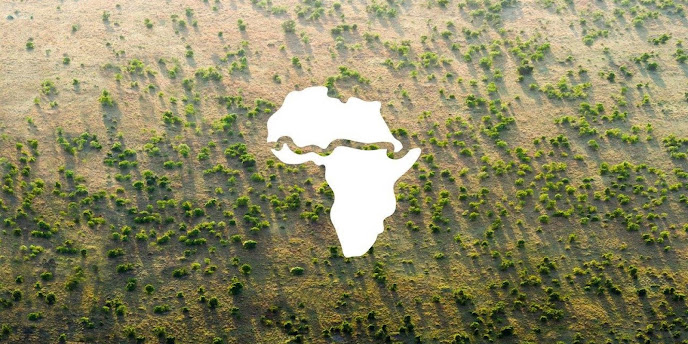Sahel's Rainfall Variability: Overview
Two in three people in the Sahel region live from rainfed agriculture and livestock (Solidarités International, 2020), making it extremely vulnerable to rainfall variability.
Most of Sahel's annual rainfall is confined to the boreal summer due to the northward excursion of the intertropical convergence zone (ITCZ) that takes the form of the West Africa Monsoon in the west and a northward shift of continental convection in the east. The mean annual rainfall varies from 100-200 mm in the north to 600-700 mm in the south. Although there is a strong north-south gradient, the rainfall pattern generally shows a west-east uniformity, as shown in Figure 1 (Nicholson, 2013; Hill et al., 2017).
 |
| Figure 1. 1979-2010 average annual precipitation (mm) in Africa (Siebert, 2014) |
Figure 2 shows Sahel annual precipitation anomalies from the average in 1901-2017 by the Joint Institute for the Study of the Atmosphere and Ocean (JISAO) at the University of Washington. It can be seen that the Sahel has been experiencing alternating dry and wet periods.
 |
| Figure 2. Sahel precipitation anomalies in 1901-2017 (JISAO) |
In the 1950s-1960s, there were very rapid expansions of grazing and agriculture due to abundant rainfalls in the Sahel. However, from the late 1960s to the late 1980s, the Sahel experienced an exceptionally long and profound period of rainfall deficit, marking the longest drought in the 20th century (Nicholson et al., 2012). More than 500 million km² of land were affected. The crop failed, and grazing became impossible, triggering massive displacement and famine. Around 600,000 people died from hunger and relating diseases, and more than 50 million people were affected (Benson & Clay, 1998).
Although research shows that Sahel's rainfall level has recovered partially since the late 1980s (e.g., Giannini et al. 2003; Hagos & Cook, 2008; Giannini et al. 2013). Yet again, in 2005, 2010, 2012, 2014 and 2015, the Sahel was hit by severe droughts. Below is a short video showing the harsh conditions in the Sahel during the 2012 drought which more than 24 million people suffered from the food crisis (OCHA, 2017). The more recent drought in 2014-2015 led to around 3.5 million people being displaced across the Sahel, 5.8 million people malnourished, and more than 20 million people without access to a secure food supply (Murphy, 2015; Guardian, 2015).
The Sahel has also been found to experience more extreme and erratic rainy seasons since the late 1980s (Samimi et al., 2012). Some new studies suggest that instead of rainfall recovery, what is actually happening in the Sahel is the rainfall intensification that is longer dry spells but more extreme rainfall when it rains (e.g. Taylor et al., 2017; Panthou et al., 2018; Eliagib et al., 2021). Intense rainfall can induce flooding. Last year, heavy rains in mid-August and September caused massive flooding across the Sahel that hundreds were killed, and tens of thousands became homeless (Smith, 2020). This flood also destroyed hundreds of thousands of hectares of agricultural land and flushed away thousands of livestock, creating substantial economic losses. Below is a short video of this deadly flood.
So what are the driving forces of Sahel's large rainfall variability?
There have been extensive debates since the last century. It is an incredibly complex picture that involves multiple components and varies from seasonal to decadal scales. But environmental change certainly plays a huge part in it. The following blogs will talk about four factors: sea surface temperature (SST) anomalies, vegetation-rainfall feedbacks, greenhouse gas and aerosol emissions in more detail.


This is a well presented overview of the implication of environmental change on water, agricultural production and society in the sahel region of Africa. It builds on the introduction nicely, showing good engagement with literature. The variations of rainfall across decades but also the intensification lately and how it is creating new challenges of water access could be considered for a future post. How does flooding unlike drought affect livestock and agricultural production?
ReplyDeleteHello, Clement. Thanks for your comment and advice. Unlike drought that cause water deficit for agriculture and livestock, flooding will destroy agricultural land and kill livestock. Flood will also bring water-borne bacteria and pathogen and pollute water for irrigation and livestock.
Delete